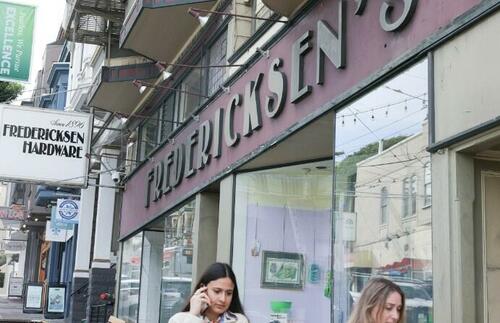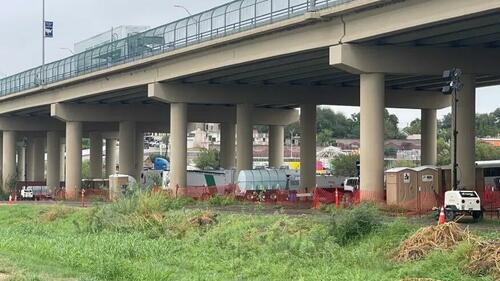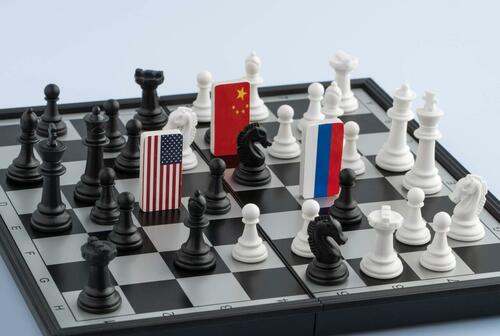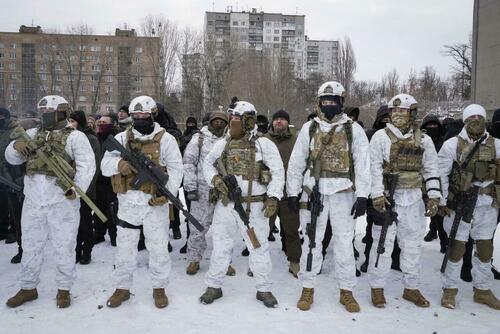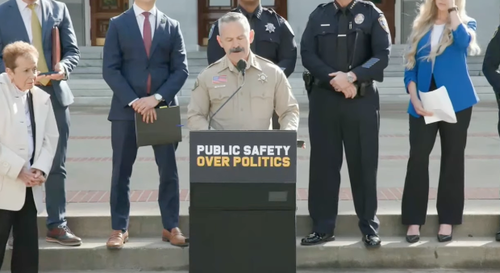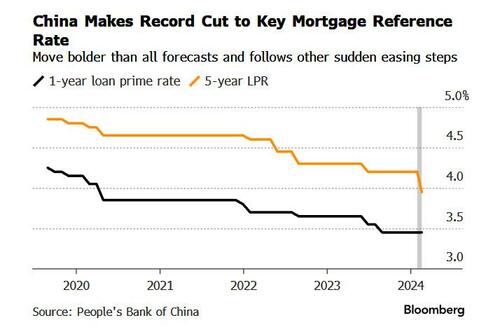Submitted by Ahmed Bin Sulayem, executive chairman of DMCC in Dubai
How the EU/Belgium mechanism will do little to depower Russia but attempt to restore Antwerp’s ailing relevance at the cost of the wider industry.
* * *
Almost two years ago to the day, Russia invaded Ukraine as an escalation of events that started in 2014, and to the widespread condemnation of the international community. Depending on which newspaper you read, reasons behind the invasion vary from Vladimir Putin’s grandiose, expansionist plans to restore the former glory of the Soviet Empire, through to Russia’s wider, and well established concerns about NATO enlargement; a reason perhaps unintentionally acknowledged by NATO Secretary-General Jens Stoltenberg, and explicitly stated by Putin during his recent interview with Tucker Carlson – his first with an American commentator since Oliver Stone’s four-part documentary, The Putin Interviews, conducted between 2015 – 2017.
As a consequence, western sanctions followed in quick succession. Primarily aimed at banks, military exports, and oil refineries, sanctions escalated to a G7 ban on Russian gold imports on 27th June 2022 and a $60-per-barrel price cap for crude oil and petroleum oils by the G7, Australia and the EU between 02nd – 07th December 2022.
For diamonds, sanctions were first imposed by the United States on 07th April 2022, aimed at Russian state-owned diamond giant PJSC Alrosa, blocking all of its US-based property and interests. In 2023, the United Kingdom imposed a general import ban on Russian diamonds, however, it wasn’t until the end of last year that a political strategy was set into motion, seemingly to seize control of the sector and allocate undemocratic, centralised authority to Antwerp.
On 06th December 2023, G7 leaders agreed to “introduce import restrictions on non-industrial diamonds, mined, processed, or produced in Russia, by January 1, 2024.” Following this initial ban, two further critical dates are now ear-marked to have far reaching effects on the diamond industry, namely 01st March when the ban extends to polished diamonds above one carat in size that originate from Russia, and finally 01st September, when a further restriction will include Russian lab-grown diamonds, as well as jewellery and watches with diamonds larger than half a carat.
As an outcome, the EU has assigned the Belgian Federal Public Service of Economy as the responsible authority for all non-Russian diamond verification, which, in practical terms will likely mean the rerouting of the world’s rough diamonds for cataloguing through Antwerp – a sharp U-turn from Belgian prime minister Alexander De Croo, who just over a year earlier rejected sanctions on the Russian diamond market, stating that “sanctions should focus more on the aggressor, than ourselves.” Even entities such as the Antwerp World Diamond Centre, which previously stated that Antwerp must remain “an open door for companies who have no options”, have had a change in heart. Whether it is because they’ve found a way to make a ban on Russian diamonds work for the ailing city isn’t for me to say, however, its requirement would mean that all countries, with the potential exception of Canada, the G7’s only producing nation, will be expected to adhere to the newly proposed policy, despite its opaque structure, unanswered questions, and imminent deadline. As eloquently outlined by an industry veteran, “So far, we have been provided a ‘what’, not a ‘how’.”
Depowering Russia
Before digging into the consequences of this imperialist decree that shows little understanding or regard for the overwhelming majority of countries and stakeholders involved in the diamond industry, it is worth understanding the practical impact of how such sanctions will achieve the G7’s stated objective. By implementing such a centralised system, the G7 aims to reduce Russia’s ability to wage war in Ukraine, by cutting off critical funding garnered from the sale of rough diamonds. However, after a quick dive into the economies of scale, it becomes abundantly clear that the extensive, global disruption to an already increasingly well-regulated industry might not be worth the effort.
In a simple case of global supply and demand, there’s no question that Russia’s production is vast. As the world’s largest producer of rough diamonds, it accounts for about 30 per cent of the global market with Alrosa being responsible for almost all production, and while efforts to curtail diamond sales have been attempted, Alrosa reported only a 2.8 per cent year-on-year fall in output to 34.6 million carats, matching its initial production plan, “despite the negative external environment”. Financially, this translated into a marginal increase in sales to $1.9bn for the first six months of 2023, while profits were down by 35 per cent to $562.5 million. Even if we assume the impossible, that no money is reinvested into Yakutia, Russian’s primary mining region, or into the livelihoods of the people who live in sub-zero conditions for the majority of the year, it would mean Alrosa could, in theory contribute approximately $1.12bn per year to Russia’s coffers. So how does that measure up to the cost of war?
According to non-profit research organisation RAND, Russia’s direct military costs as of September 2022 were $40 billion, and are expected to amount to almost “$132 billion through 2024”. Based on these figures, on average, the Russian war machine requires approximately $126.56 million per day to mobilise, meaning a dent of just under nine days or roughly 0.85 per cent of the conflict’s total budget from 24th February 2022 to a projected date of 31st December 2024. It is also worth noting that Alrosa’s production is dominated by small diamonds, not only meaning the majority of its production wouldn’t qualify under the sanction criteria, but furthermore continue to find their way into the global supply chain without resistance.
Certainly, for the G7, even a dollar earned from diamonds is one too many, however, giving them the benefit of the doubt that curbing revenues, however small, are part of winning the battle in the context of war, it is next essential to understand the effects of such policies, particularly towards producing countries, and supply chain stakeholders.
The Impracticalities of Antwerp
Based on Russia’s known contribution, the proposed EU/Belgium mechanism will extend to the lion’s share of global, rough production, requiring all diamonds (with the possible exception of Canada) to be sent to Antwerp for cataloguing. However, several flags have already been raised by industry stakeholders surrounding diamond aggregation, traceability, transparency, scale, execution, Belgium’s notoriously difficult banking system, and of course, Antwerp’s chequered history with fraud and corruption.
Starting with aggregation, for many diamond traders, rough diamonds are mixed from different sources to create added value before being processed. Under the new proposed scheme, diamonds would need to be sent separately to ensure proper cataloguing, resulting in a major win for logistics contractors, but a major loss for producing nations and the environment.
When it comes to traceability and transparency, it is difficult to posture, as the exact details have yet to be published. Certainly, questions to which the wider industry would want answers include what information is required for each diamond, who has access, or the ability to edit data, and how much of it will be made available to the public? Given that Antwerp ceased publishing its data in January 2022, who will be responsible for supplying data and can it be relied upon as truthful and accurate?
Regarding logistics and scale, what preparation has been made by the Antwerp Diamond Office or Antwerp World Diamond Centre in terms of handling and processing, and will they have the capacity to immediately handle 70 per cent of the world’s rough diamond output? Even if suitable preparations have been made, no proof-of-concept has been tested meaning significant delays to the current processes, adding on to what was already a notoriously slow year.
According to Peter Kovacs, head of unit at the European commission, that doesn’t matter, a feeling shared by Brad Brooks-Rubin, senior advisor at the US State Department. They have been working on implementing the G7 mechanism that Antwerp lobbied for, however, when I met Peter and team in Belgium a few weeks ago, they stated they expect all markets to have issues with the new G7 policy, which will need to be ironed out in due course. When asked how long that will take, there were no concrete answers. From my experience alone, whether that’s six weeks or six months, African nations and the industry at large cannot afford to wait that long. Unfortunately, the resounding message from Peter Kovacs on behalf of the G7 was simply that sanctions had to be put in place at any cost. Having recently visited the Central African Republic and seeing first-hand the damage that global policies can have on some of the poorest communities in the world, I am deeply concerned. I can only hope that the G7 begins to properly consult with all non-Russian diamond producing nations – not just Botswana, rather than implementing an untested experiment, designed by technocrats who have no understanding of the diamond industry, and the millions of people around the world whose livelihoods depend on it.
If companies are effectively coerced into sending goods to Antwerp, will more companies be required to establish a business presence in Belgium, and or set up a bank account? If so, a lot more will need to be done to make the financial sector more diamond-friendly, bearing in mind its current stance which considers the diamond industry as ‘high risk’. Through personal contacts, I know of one highly successful Belgian businessmen who’d diversified into the diamond business, only to receive a letter from his bank stating that his account would be closed in forty days due to his new “high risk” activity. If this is the reception extended to Belgian nationals, I’m uncertain whether African-based diamond traders will fare any better.
Finally, there is the spectre of fraud and corruption and while I appreciate the EU’s proposal for selecting Antwerp as the obvious choice for its sanction scheme, given its extensive history with the diamond industry, it isn’t without its well-documented cases of fraud and corruption.
On 17th May 2016, the Monstrey Case uncovered a large-scale fraud involving 220 suspects, of which 36 were brought to trial. The case included document falsification (including fraudulent Kimberley Process certificates), money laundering and criminal conspiracy to the amount of over €100 million. A year later, the Belgian Federal Police Corps’ second highest-ranking official, head of the special Diamond Task Force and UN-expert, Agim De Bruycker was arrested twice and served a custodial sentence for falsifying documents and money laundering. While I appreciate that criminality is a global issue, I am certainly not alone in thinking that if the EU/ Belgium wants to centralise an entire industry, it needs to do so through consensus, complete transparency, and with a lot more thought than is currently being presented. If the result is to utilize blockchain technology, then surely cataloguing can occur in each diamond producing nation, as opposed to the highly convoluted process of physically sending products to Belgium at great cost. Which neatly brings me on to the topic of sovereign accountability.
Stakeholder Autonomy
Having recently attended Mining Indaba in Cape Town where I met several ministers of mines, it is clear that most African nations are not only tired of having to abide by policies in which they have little to no say, but particularly over minerals which are rightfully theirs. Producing African nations not only have a right to certify and verify their own production, but furthermore are accountable to their national stakeholders in terms of protecting employment and generating wider industry development. This further extends to the artisanal and small-scale mining communities which are estimated to account for 20 per cent of the world’s gem-quality diamonds. Estimated to include between one to two million workers worldwide, the EU/ Belgium mechanism needs some considerable thought as to how its decentralised traceability solutions can be made to work for all stakeholders, without alienating the industry’s most vulnerable communities.
Then there are the world’s diamond centres, most notably Dubai, Mumbai, and Surat, which have become global hubs for trading and manufacturing rough into polished diamonds. In 2022, the UAE had a trade volume of $37 billion in rough and polished diamonds, while India remained responsible for the cutting and polishing of around 90 per cent of the market. As natural trading partners, the relationship was further boosted through its mutual CEPA policy. In the same year, the UAE’s non- Russian rough diamond trade was valued at $17.5 billion, a figure that would be put under significant threat through the current proposal.
Outside of the core trading, cutting and polishing markets, there is also little consideration shown for the largest consumer market of the U.S. To date, no dialogue has been established between the G7 and U.S customs, meaning that on the 01st March/01st September there will likely be a complete block on imports. This further extends to other issues such as how lab-grown diamonds will be identified or distinguished as non-Russian.
As major stakeholders within the diamond supply chain, it simply isn’t good enough that the EU and Belgium can expect blind compliance with policies that solely serve their best interests, and not those of the wider industry. Not only are there significant questions that need answering, but clear stakeholder disruptions that require meaningful accountability.
Two-Tiered Diamond Industry
It is also worth remembering that a potential outcome of an active Belgian/EU mechanism will be a two-tier market. On one hand, the G7 economies with their extra burden of added certification, inefficient, centralised logistics and dictated, unilateral rules, and on the other, the BRICS+ nations, which will allow all diamonds to flow freely, based only on KPCS. As the existing trade centre for diamonds and based on its highly functional relationship with the world’s largest polishing market of India, Dubai will continue to function as a bridge between diamond producing nations and all consumer markets. It is also worth noting, that according to the IMF, the BRICS+ countries already had 36 per cent of world GDP in 2022 at power-purchasing parity, against the G7’s 25 – a difference of $10.44 trillion, and a gap that is only likely to increase in the future.
My stance, however, is not to segregate, but to unite the industry, while promoting fair competition, and the complete involvement of all stakeholders throughout the value chain.
The Kimberley Process
Probably the most obvious elephant in the room is that of the Kimberley Process – the twenty-one year-old, multilateral trade regime equipped with a certification scheme that enables states to implement safeguards on shipments of rough diamonds and certify them as “conflict free”. As an organisation, the KP’s role is to cooperate and create dialogue for all matters concerning diamonds, in particular when it comes to transparency. Underpinned by the United Nations mandate, actively supported by 85 nations, and backed by the leading civil organisations, the KP has been successful in stemming 99.8 per cent of the world’s conflict diamonds. As an organisation whose chair changes every year, its existing structure and policies are the perfect fit for discussing and addressing concerns in an open, fair, and democratic manner, however, its evident ostracization would suggest the EU and Belgium have other reasons for their highly impractical proposal.
Before February 2022, Alrosa was a strategic partner to Antwerp, however, in light of international competition and the European Commission’s stance on Russian sanctions, Belgium’s Russian rough diamond imports fell by almost 70 per cent in just two years from 2021 – H1 2023. With Antwerp’s well-documented decline as a relevant hub for the world diamond industry, it could certainly be argued that the proposed mechanism is more accurately designed to reinvigorate relevance into the ailing hub by leveraging the G7’s blinkered focus on “defeating Russia”, regardless of cost or collateral damage.
In a glimmer of hope, a virtual meeting which took place between a US government official and the country’s leading jewellers on 15th February suggested that “America could accept ‘self-certification’ from its jewellers that the diamonds imported into the country have no Russian links”. The conversation further recognised that the EU’s proposed regulation had been ‘questioned by African countries and India which feel that a system of first funneling stones into Belgium before moving them to final consumption centres would push up cost, delay deals and disrupt the age-old trade.’ The fact that the U.S is considering a multi-node approach is at least a step in the right direction, however, given Antwerp’s long-standing, often dependent relationship with Alrosa, it should consider a fully transparent mechanism that avoids centralised control and provides all diamond centres with the autonomy to self-regulate.
As candidly shared by an Ipis researcher who acknowledged the relationship between Alrosa and the Belgian diamond market, “It’s such an important supplier, corresponding to 25 per cent of diamonds coming into Antwerp. If they lose it and Dubai (UAE) takes over, then it’s a very difficult movement to stop. Now their way is to say that the demand is reducing”.
In a similar way, should the EU/Belgium mechanism be enforced, its impact will also be difficult to stop, but most worryingly will set precedent as an authoritarian decision made to achieve the tangential goals of the few, at the cost of the many. It would seem now more than ever that this is the right time to remind the G7, the EU and Belgium that the era of colonial rule is over, even when disguised as protectionist policy.
